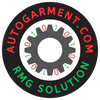
High Pressure Water Pump Check List. Conducting drills
High Pressure Water Pump
High Pressure Water Pump – Auto always ready to abide by the Environmental rules and regulations and belief in sustainable development wholeheartedly. We have functional ETP plant is running 24/7 to discharge neutral water in environment. We are using Electro Coagulation System.
We have in-house traditional parameter test equipment facility. We fulfill DoE legal requirement in every three months.
We are following Solid waste management facility to dispose the solid wastage in environment friendly method.
We are doing environment friendly wastage management following our own guideline considering the Environmental rules & regulation of local & international.
- Check the electrical connection of the motor
- Proper earthing condition of high pressure water pump
- Inspection for damage of Electric contact point
- Check the current at each phase at running condition
- Check the MCB and Overload
- Is there correct indication at the pressure gauge
- External cleaning
- Any leakage at the connecting point
- Check the insulation
- Check any leakage of high pressure water pump
- Check the water leakage
- Check any abnormal sound
- Check the motor hot or cool at running condition
- Any leakage at the valve
- Is the valve operated easily
- Pipeline
- Outer surfaces of the pump and motor
- Painted the rusted surfaces area
Conducting drills
- Offshore fire / Gas release Drill Procedure
- The following steps should be included in every fire / gas release drill:
- Location of the fire / gas release
- Sound the alarm
- Person in Charge assumes control
- Muster
- Search
- Rescue of injured persons
- Investigate scene of incident
- Restrict of fire
- deploy fire Teams
- Extinguish fire
- Offshore Abandon Drill Procedure
- The following steps should be included in every offshore drill:
- Sound the alarm
- Contact rescuers
- Muster
- Search
- Rescue injured or trapped person
- If decision to abandon is taken, board the suitable lifeboats or vessels.
- Instruction on when and how to deploy
- Operate all equipment (with the minimum crew on board lifeboats)
- Deploy Fir Teams
- Experience Alternate abandonment means
- Review steps after launch
- The steps that should be taken after clearing the platform vessel or module are discussed.
- These steps include:
- ending circumstances rescuing survivors from the sea:
- Motoring away from site,
- Maintain position,
- stablish radio contact with land or ships in the area,
- Give treatment to injured,
- Safe conduct when rescued by large craft or when proceeding to and,
- Demonstrate good seamanship.
- A record of all emergency drills, exercises and alarm tests must be kept by the Fire
- Marshal, HSE Supervisor and HSE Officer on barge/onshore locations in a book or similar to be used specifically for that purpose.
- The record must include:
- Date and Times.
- Type of drill, muster or alarm test.
- No. of personnel involved.
- Names of personnel involved (For drills only).
- Details of recommendations and completed actions.


